Citizen Cope live streaming concert at VERSE LA
Manny Marroquin and Citizen Cope reinvent the live concert space
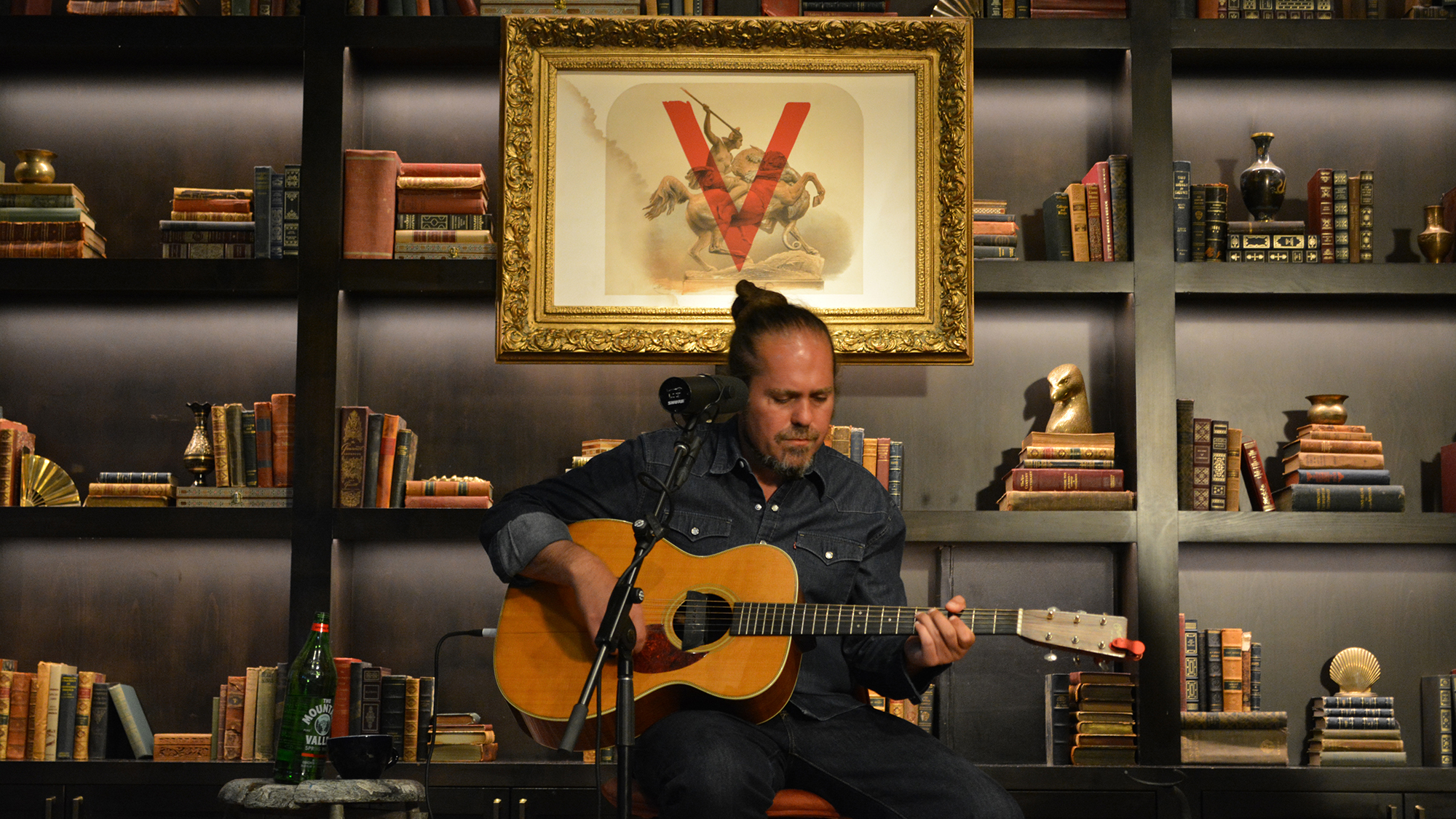
Pro Audio + Video + Streaming. Our editors are experts in pro audio, video, and streaming. Get daily insights, news, and professional networking. Subscribe to Pro AV Today
Live music has always evolved. Now there is an urgency to it Already, creative pros are stepping into the void to do what music people have always done— connect artists and audiences by whatever means necessary. With all the evolution and reinvention that has gone down literally over centuries of music, this is probably the biggest challenge ever. The core relationships—performer to audience, and audiences to each other—are not physically available. So what now?
Five years ago, Manny Marroquin already wanted to do a reinvention that he saw as a studio in a restaurant. The multi-Grammy-winning mixing engineer envisioned a new kind of immersive performance space that would physically connect his renowned Larrabee Studios and a favorite restaurant two doors down. He acquired the space and with his collaborators made a beautiful supper club, a sensual experience that would pair live performance with the artistry of the chef. Marroquin believed the room could be mixed like it was a sound studio—locally from an Solid State Logic L300 desk next to the kitchen, or over a network from Larrabee, also an SSL house; the full force of Marroquin’s toolkit can be applied to the room and vice versa. Marroquin also made the bold investment to install the first Meyer Sound Constellation acoustic system in a restaurant in Southern California, allowing him to balance and refine the acoustics of the music-forward venue to his keen ears.
It came to pass. VERSE opened on December 14th as Marroquin had envisioned it. Over the next few months they hosted a Grammy weekend of live performances, they did a calendar of jazz performances, and expanded live music to Wednesdays. They got glowing reviews for the food and the sound.
And then, the game had to change again. In Los Angeles, bars and restaurants were shut down on March 15, opened up on June 19, and closed again nine days later by order of the governor. As a restaurant, VERSE still planned to host a Citizen Cope concert within guidelines on July 3. On the day before the show, the Governor closed restaurants too.
Citizen Cope was already adapting to the new world and already planned to livestream the in-person event. The event was postponed a week and reconceived as livestream only. Two performances streamed directly from the VERSE space, supported by the SSL desk and the Constellation system and served up by Citizen Cope’s own streaming rig, which Marroquin calls “very cool and interesting.” VERSE also has its own streaming infrastructure, with ARRI cameras, something else Marroquin had been planning for, even without COVID. As with a lot of things, COVID has sped up the process. “The idea five years ago was to build a studio in a restaurant, make it a platform for artists. We were thinking eventually streaming, VR, Oculus, just ways to bring audiences closer and create some new experiences.” He’s working with Soma on a planned 10–20 episodes with different artists performing Live from VERSE.
“Artists, just like everybody else have to adapt,” he says. “If you don’t have the creativity you will stay behind, but that’s always been the case.” Marroquin says. He’s seen it in the studio. Artists—now famous—had to push through the unfamiliarity of the studio to find their voice and learn the techniques that worked for that format. “Music is emotion,” Marroquin says. “You have to find the energy you are going to feed off of. If a soccer player normally feeds of the energy of the fans, they’ve having to adapt. Artists, too, they can adapt. They can adapt to playing for a camera if they’re supported with good partners and quality equipment. We have to give artists the ability to capture content in the best possible way, because that directly affects the emotion of the music, and the emotions are what stay with you forever.”
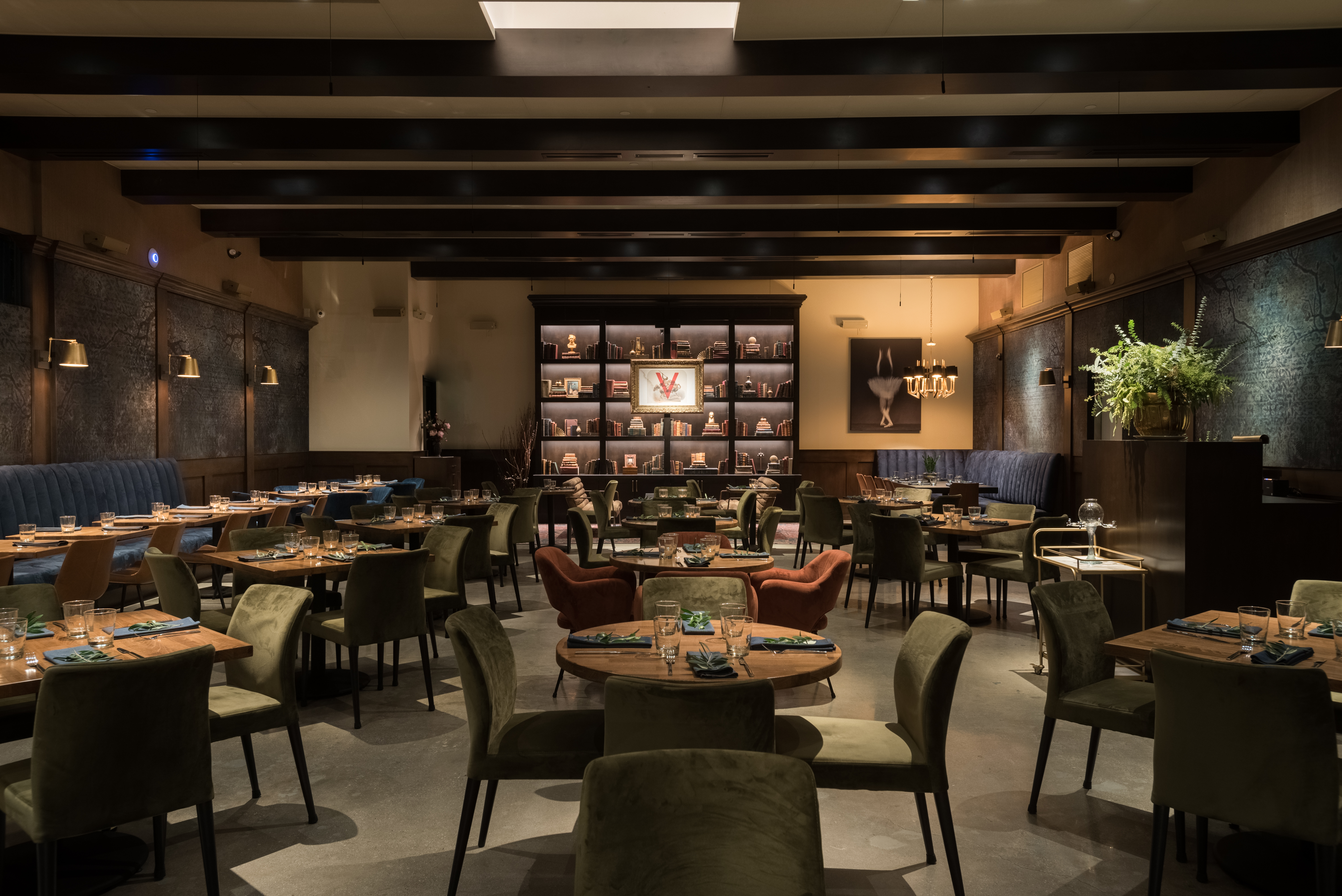
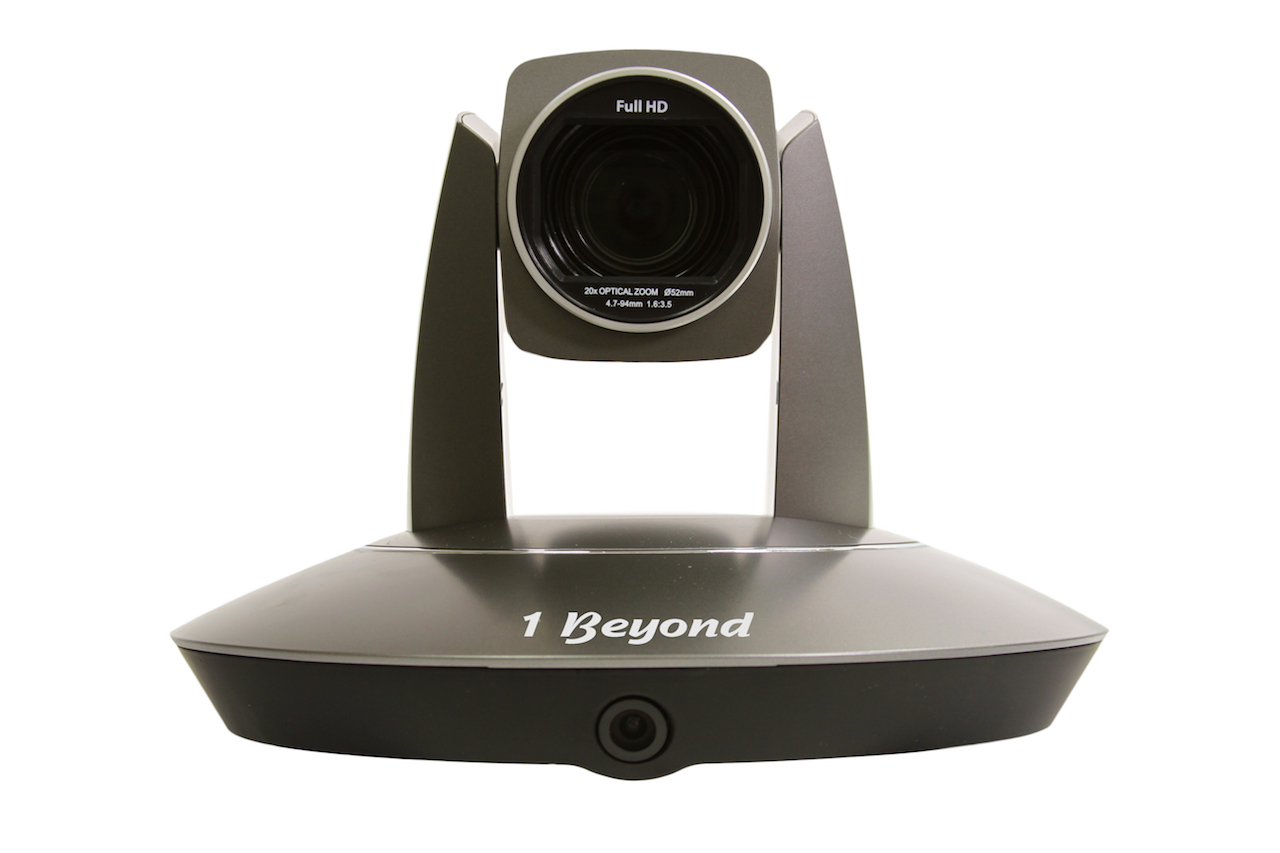
But if it’s livestreamed, does it really matter what kind of gear is in the room? ”Yes,” affirms Solid State Logic Senior VP Phil Wagner, not surprisingly. He says it’s that same garbage in/ garbage out equation as it is with records; the better you capture, the more you’ve got to work with. “When streaming algorithms deconstruct the sound and put it back together with 20% of the data left, that 20% had better be great. There’s a direct correlation between capturing it right and how it’s experienced, down the line, and for decades.”
Are you a pro? Subscribe to our newsletter
Sign up to the TechRadar Pro newsletter to get all the top news, opinion, features and guidance your business needs to succeed!
For SSL’s part in the chain, Wagner harkens back to the basics of digital audio, which he has long experience with. “’At the end of the day, it comes down to convertor quality—at the front side and in the backside, the mic preamp quality and the analog signal. This is an area, he says, SSL has always strived to excel in and formalized into what the company calls SuperAnalogue. The 25-year-old design philosophy was first featured in the SSL 9000 Series mixing consoles. Since then, the technology had been the foundation of the AWS 900 and Duality recording consoles, and brings parity to SSL’s studio and Live consoles. SSL describes the concept: Through use of the trademarked DCcoupled circuit design, implemented in modern surface mount manufacturing techniques, SSL processors have a linear, transparent audio path with ultra-wide and flat frequency response, extremely low distortion and an almost unmeasurable noise floor. It provides a bandwidth greater than 192kHz recorders and claims a dynamic range well beyond that of 24-bit A-D converters. The circuits are designed to be the fastest-acting, most tonally accurate available, Phil says, something that he and Marroquin both believe translates to audiences in person, in the studio, and remotely. “In my almost 30 year career you would think there would be a lot of options, but still SSL is, in my opinion, the best in the world for what I’m trying to do with the music.”
The other powerful technical tool at VERSE is the Meyer Sound Constellation system, which tames the typical restaurant cacophony, balancing the room acoustics for music, and for a comfortable listening experience for diners. “Restaurants are loud, agitating and uncomfortable, and my ears are sensitive to that for obvious reasons,” Marroquin says. “I asked myself how we could get rid of all the frequencies bouncing back and forth, and I realized we had to build a recording studio and put a restaurant in it.”
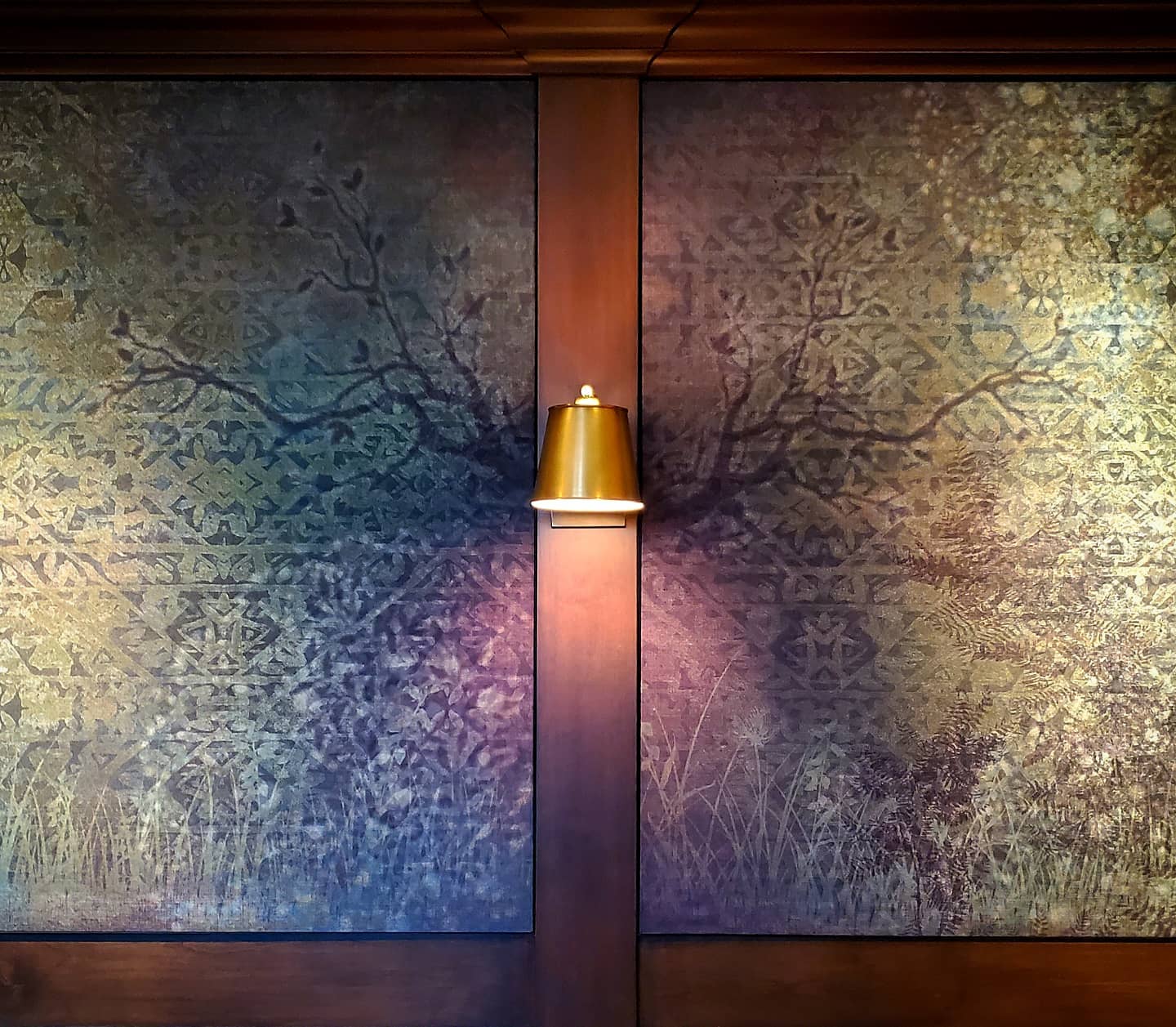
Constellation’s array of overhead and lateral loudspeakers also enables use of Spacemap, Meyer Sound’s spatial sound technology for shaping the audience experience, software that Marroquin says “ just blows his mind.”
The Constellation system carefully self-calibrates the restaurant’s sound according to presets, but it’s also able to shift the acoustic balance on command from an iPad. Twenty-eight Meyer Libra panels—the largest installation in a single room in the world—are cloaked in Laurent Newman’s graphic design, while 60 Constellation speakers capture the room’s sound and re-release it into the space at the appropriate volume level via drop microphones hanging from the ceiling. Marroquin can essentially “mix” the sound of the space like it’s a sound studio. Bass traps absorb extraneous sound that hits the ceiling.
“Even with concrete floors and hard surfaces like tables, there are literally no dead zones anywhere in the restaurant,” Marroquin says. “You can walk anywhere in the restaurant, and there’s the same pressure level—the volume, essentially—the same lows, highs, and mid, the same frequency response. That blew me away that they were able to achieve that.”
To achieve this, Meyer employees worked for 14 hours a day for six days, testing the space and tuning the room. Marroquin says his own studio takes two hours to tune by comparison.
The result is a 140-seat room that’s seldom too loud for conversation but not too quiet to suppress private conversation. It’s also a room with a mixture of appropriate sounds like music, chatter, and ice rattling against a cocktail shaker, instead of an emphasis on merely the one loudest sound. Unobtrusive Meyer speakers facing the bar and strategically spaced across the room play back these ambient sounds in a balanced way.
To sample the ambient room sound, the Constellation system deploys 24 miniature cardioid microphones around the space. After processing through an 11-module D-Mitri digital audio platform, the desired room characteristics are mixed with the background music program and distributed to a total of 52 self-powered loudspeakers: 41 UP-4slim full range loudspeakers and 11 MM-10XP miniature subwoofers.
VERSE’s more traditional Meyer reinforcement rig comprises two ULTRA-X40 loudspeakers as mains with two 750-LFC low-frequency control elements for lows, augmented by two UP-4slim loudspeakers as fills and four UPJunior loudspeakers as monitors.
“The beauty of that is we can tie into the Constellation speakers so you don’t have to drive the PA that loud,” Marroquin says. “The sound feels big, but it’s not killing your ears because it’s in a controlled, studio-like environment. It’s always pleasant and evenly distributed throughout the room.”
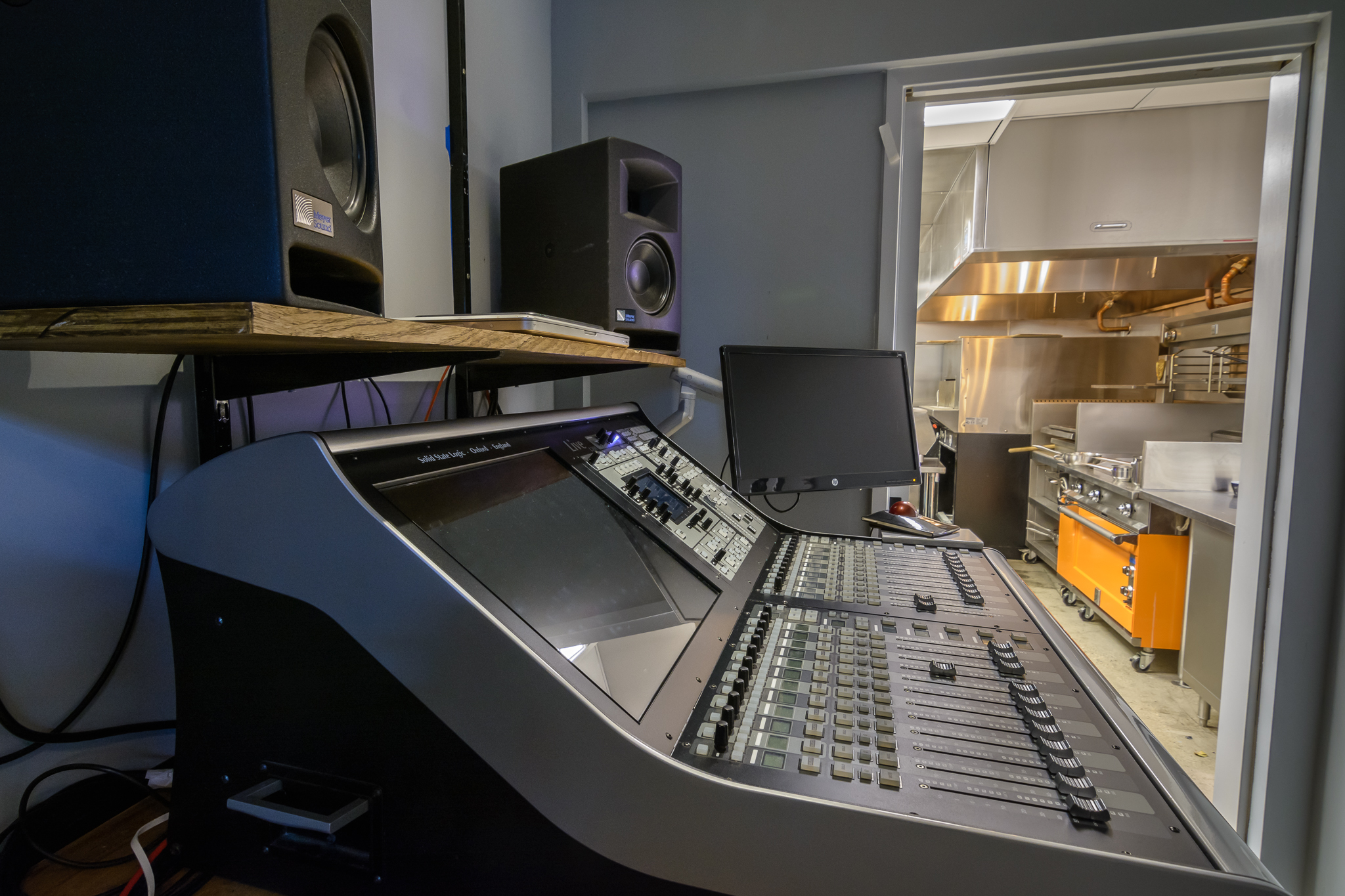
The combination Marroquin says is a benchmark for what restaurants can be, without the excruciating fatigue of bad acoustics with music and conversation in relaxed balance. It’s something that may become even more important in a time when shouting to be heard over bad acoustics is not best safety practice.
Finally, one of the most future-empowering technical decisions was a fiber drop from Larrabee Studios to VERSE, providing a bidirectional Dante network that can unite any or all of Larrabee’s rooms with each other and the restaurant. From its isolated sound booth next to the kitchen, the SSL Live L300 is connected to a digital hub at Larrabee Studios, which opens up myriad possibilities for live and remote music. For live recording sessions, VERSE enjoys access to Larrabee’s world-class microphone locker and stock of instruments, including a Yamaha C7 grand piano, frequently graced by Alicia Keys.
It was all very ambitious before COVID. Now it’s next level. But opportunity always goes back to the same thing Marroquin says, “The glass is either half full or half empty.” (Though engineers usually say the glass is twice as big as it needs to be). Marroquin’s 30-year career collaborating with artists such as Keys, Kanye, Lizzo, Post Malone and really too many to name has been full of surprises (“every great song has a happy accident”) This time the surprise is how one dream has become another, for now, until we’re back in the room.
People
- Manny Marroquin Founder / Owner / Fearless Leader
- Kevin Madigan Sound Engineer
- Rob Ciancimino General Manager
- Antonio Marroquin VERSE Photographer
- Meyer Constellation Sound System
- Executive Chef Oscar Torres
- Beverage Director / AGM Vincenzo Latiano
Equipment
- SSL L300 with Dante Outputs direct to Larrabee for recording/mixing where necessary.
- Meyer Constellation; 24 miniature cardioid microphones, 52 self-powered loudspeakers (41 UP-4slim full range loudspeakers and 11 MM-10XP miniature subwoofers)
- FOH/Mons Systems; 2 x ULTRA-X40 loudspeakers as mains with 2 x 750-LFC Subs, 2 x UP-4slim loudspeakers as fills and 4 x UPJunior loudspeakers for monitors.
- 2 x Meyer Sound Amie studio monitors
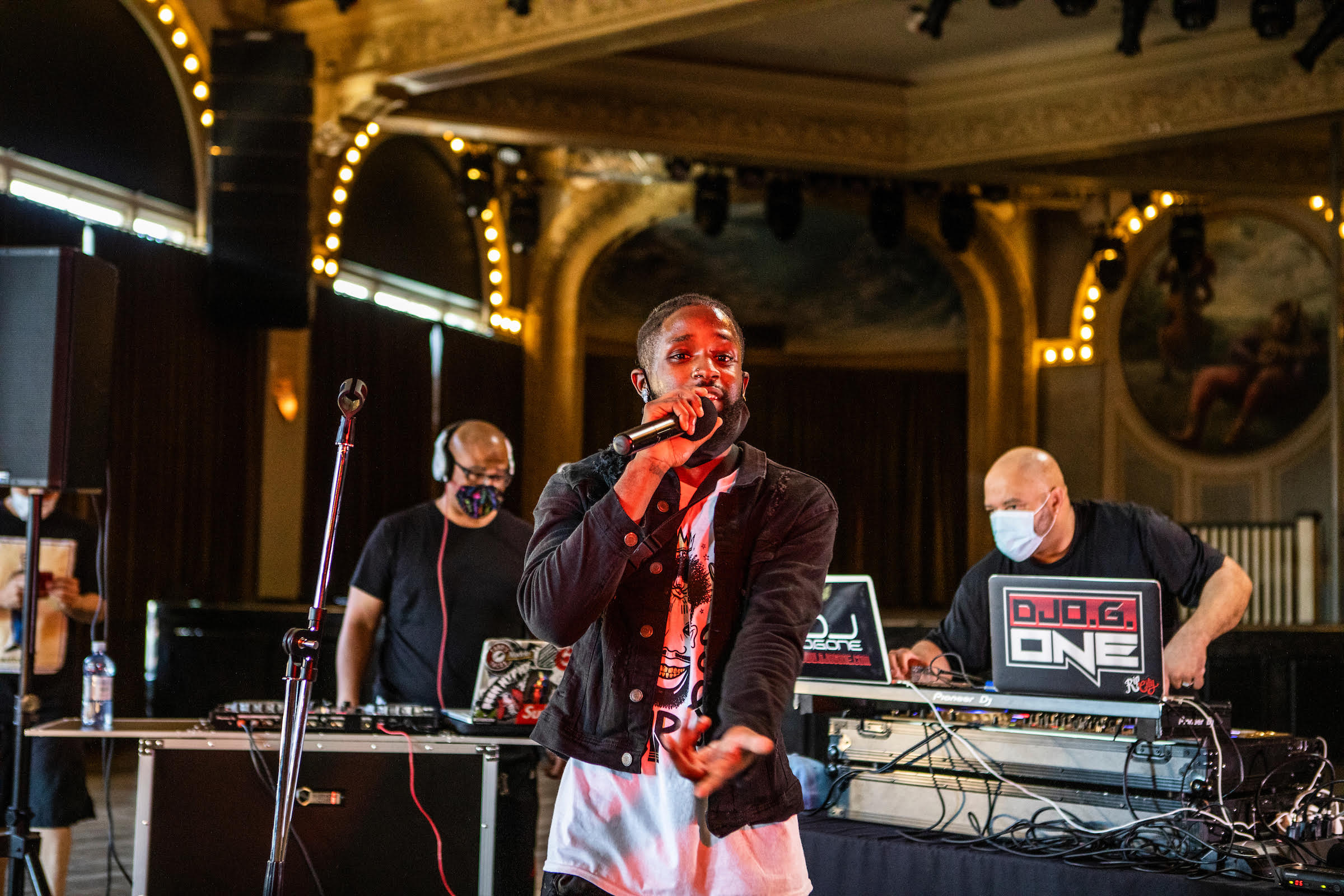
Virtual Nightlife
The Crystal Ballroom is one of Portland’s most-loved and best-equipped music venues. It’s part of the McMenamins chain, a remarkable family-owned network of brewpubs, breweries, music venues, historic hotels, and theater pubs in Oregon and Washington—many in historic buildings and equipped with high-quality technical systems. The flagship 1,500-seat Crystal Ballroom is a Bose house since Tone Proper AV redid the systems in 2017. Now, in the time of COVID, those systems are deploying in the service of Dance on Air Summer Series. The venue is hosting artists on its balcony and from some of their many inside venues (depending on act size) to be enjoyed over Facebook and Instagram every other Thursday. Fans are encouraged to order takeout and beer delivered, and tip the musicians via Venmo (the stream is free). This month Mic Check (pictured) will be back, offering up a hip hop stream from the venue’s White Eagle saloon.